Although we are based out of the University of California Davis, our field studies of Sage-Grouse take us to west-central Wyoming. This is one of the best places to find this species, with lots of good habitat for the grouse and other sagebrush specialists.
It’s also a stunningly beautiful place to get to work. Our camp looks out on the eastern face of the Wind River Range, a spine of the Continental Divide near Lander, Wyoming. Although we are less than an hour from town, we feel like we are in the middle of nowhere. We can see distant lights from Riverton, and a bit of city glow from Lander, but otherwise we have this patch of heaven almost to ourselves.
The first challenge we face is simply getting all of our gear out to the site. This takes careful packing followed by a long drive through the lonely spaces of Nevada and Utah.
Once we’ve landed in Lander, the next step is to get the camp set up. Besides our RV, we have to rent a work trailer, as well as propane service. Thankfully we have electricity; there’s a line that runs the well pump for the cattle water tanks in the summer that we can use in the spring (the cows don’t come up until May when we are done with our research- we’ve been fortunate to coordinate with the local grazing leaseholders on this).
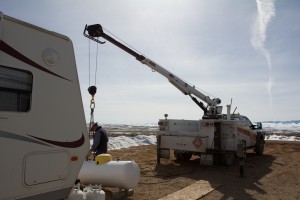
Propane tank arrives- nice to have heat, hot water, and cooking capability without having to run into town to fill canisters all the time.
Our first field technicians arrived on March 3rd, and the following day we were out at dawn looking for grouse on the leks. It’s still very early in the season- at least 2 weeks before the earliest sage-grouse mating we’ve ever recorded during our years out here. This means some leks will still be empty while others will have a few males starting to set up territories. Our first visit is to the most accessible lek called Chugwater Lek (in our area each display ground has a unique name). We didn’t see any birds, and a search of the lek surface showed no fresh sign. Our first birds didn’t show up here until March 7.
Cottontail Lek is our largest lek, and on our first visits there we did find males starting to set up territories. This was the first chance for the crew to see the courtship display, and they were suitably impressed (just wait until they get to experience it from a blind down on the lek instead of a distant look-out point!) We were also treated to a large herd of pronghorn moving past in the early morning light. This was also a new animal for some on the crew. They are taking to the western wildlife quickly, although some are still getting used to the idea of a landscape without any trees!
Over the next couple of weeks we will be gearing up for our data collection, which will involve setting up a grid of stakes on the lek to help with territory mapping, installing microphone cables on the leks, starting to get photographs of the males to distinguish them, and hopefully capturing and banding some as well.

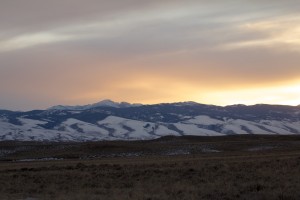
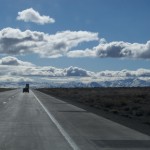
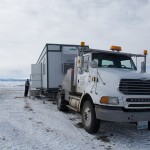
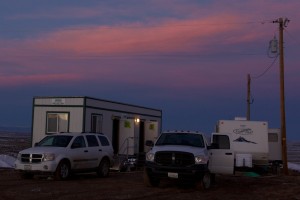
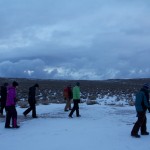
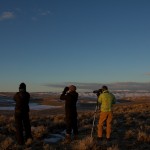
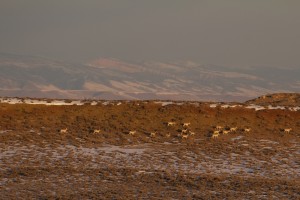
Looks like a fascinating place to do fieldwork! Best of luck this season!